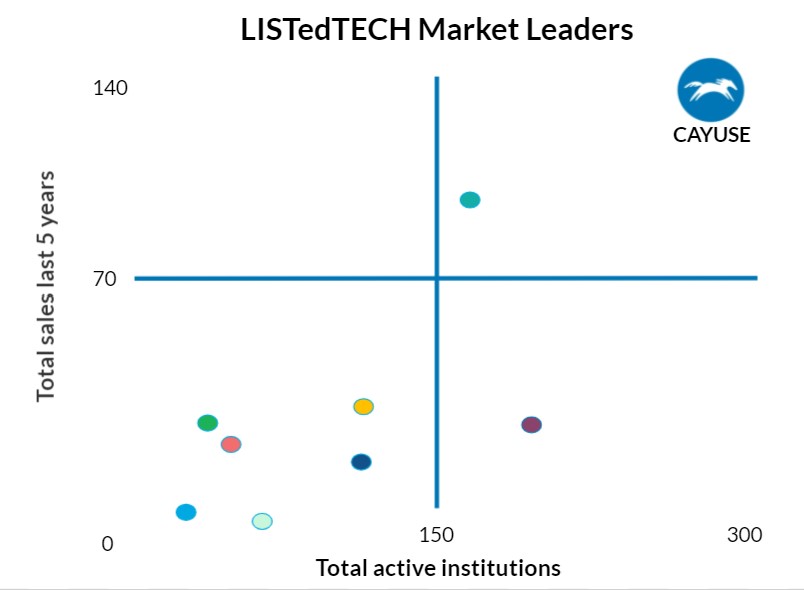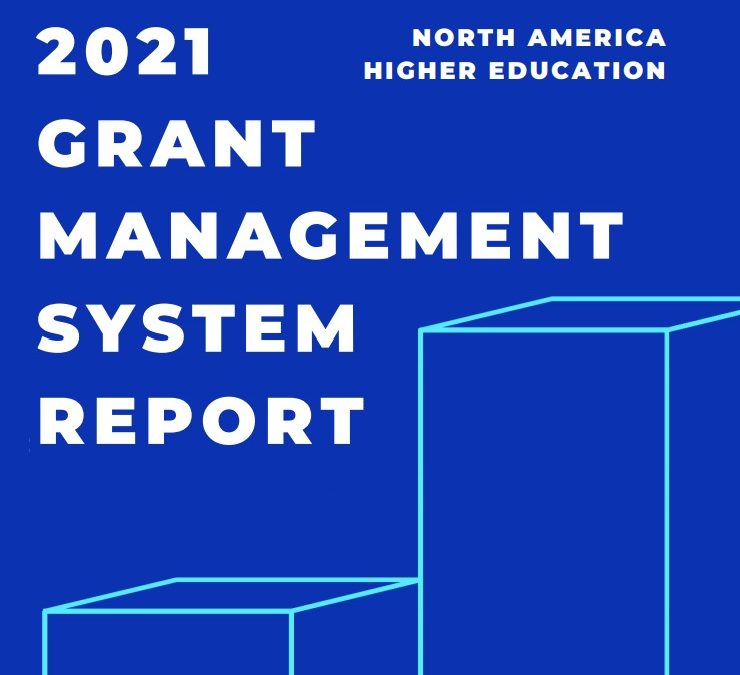The report lists Cayuse as the “market leader on all counts.”
LISTedTECH is a market research firm tracking trends in higher education grant management systems relevant to colleges and universities, consultants, Higher Ed-related companies, and investment firms. LISTedTECH produces an annual grant management system report and the 2021 version has just been released. The purpose of the report is to offer a deep dive into the software solutions currently available highlighting relevant data to better inform the selection of a grant management system. The 2021 report looks at data from almost 1,400 North American higher education institutions that have grant management systems in place. Cayuse is proud to be the market leader in sales and new implementations over the last five years as the 2021 report indicates:

Justin Menard is the founder and CEO of LISTedTECH and I sat down with him for a look at the 2021 report. Watch the video for the full interview, or scroll down for a summary of the interview insights:
The first report started with us just asking questions and noticing that the market didn’t really have a report specifically for grant management systems. There was a wider report focused on the industry, but nothing specific to Higher Ed institutions. We had all the data, but we hadn’t written a report on it before, so we said, this is a niche within a niche and that’s sort of what we do as a company, so we wrote our first report last year. Now the second report is improving on what we started last year.
What surprised you about this year’s report compared to last year’s?
My initial thinking was that there were only a relatively few large research institutions using grant management systems. But, with this second report, we see that the market is getting much wider. It’s not just the R1 and R2 institutions that are using grant management systems; there are smaller institutions that are trying to find ways to get new financing, or they have some research going on, and there’s a lot of rules around that research so they are looking for help managing the process. We’re seeing an increase in smaller institutions that are actively starting to use grant systems.
Do you see a trend overall in the Higher Ed space where there’s a deeper need to find diverse funding mechanisms that are beyond purely tuition-based? When you start changing where students get their education, and how they get their education and with the impact of the pandemic, it’s just not business as usual anymore.
That’s something that we touch on in the 2021 report. We try to break down the market by institution size, or R1s, R2s versus the others, to see if there are different choices around products, and this year we added another component, “research income” which gives us a different point of comparison. We took an existing research institution income ranking that breaks out 650 of the biggest research institutions and we tagged them with the products that they’re using. We thought we might see some unexpected trends, but in the end, the same software management leaders were at the top. So whether you’re a small institution, a big institution or a university with 1000 students, the same systems from the same vendors are in play regardless of an institution’s research income.
Building on that idea of diversifying, or identifying alternate sources of income, you added a section on tech transfer and it does seem like the tech transfer process from initial discovery and ideation all the way through to commercialization is becoming more important. What led you to add this new content?
We noticed tech transfer and touched on it in our first report as something that’s out there. In this report, we go a bit deeper because we realized there are only a few companies that have the A-to-Z, full-suite capability to provide support over the full range of processes in the research lifecycle—Cayuse is one of them, with the new module, Inventions. This is ideal for larger institutions that develop a lot of intellectual property and need to figure out what to do with it in terms of managing copyrights etc., so this sort of tech transfer module really helps those institutions. It’s something that we just started compiling the information on, so hopefully next year we’ll have a deeper understanding of who’s using what around the tech transfer process.
Can you talk about the value of sharing data on a cloud-based system versus an on-premise system? Are you seeing certain trends there?
When we begin researching these reports, one of the things we do is start with a survey sent to all the companies that we cover. Then, very often there’s a follow-up phone call to make sure we understand everything and that’s one of the things we ask about: What are the different components of your grant management system? Do you host it locally? Do you have SaaS? Is it cloud-based? What’s your definition of the cloud? Most technology is moving to the cloud for a lot of companies, and it’s definitely something institutions are looking at. With SaaS cloud-based products you don’t need to do updates anymore. You don’t need somebody to manage it, which is great. The question that comes up is often about data security. I know for Canadians it’s always a big thing because they want to know where the data is hosted—Is it in the US? Is it in Canada, because all these different regulations come into play, so having data hosted in Canada may be important?
Where’s the report heading next year? Are you already thinking about new categories and comparisons?
We talked to a lot of companies and much of the feedback that we got this year was “it’s great that you’re doing the grant management report, but can you break it down into different modules?” I think the next step is to break the report down, and actually compare apples to apples within a category, for example in terms of, say, compliance, we just look at the compliance and understand who’s using what products from that point of view—or, tech transfer definitely—we’ll at that, who’s using it, what are they using, etc.? So that’s probably where we’re going next year with a tighter focus on certain aspects of the overarching report.
Learn More: Access the full 2021 LISTedTECH report here.


